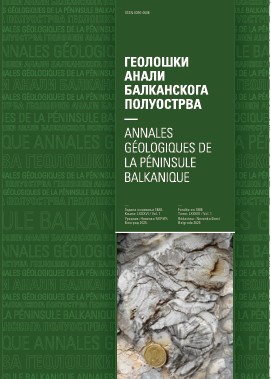A new elephantoid dental specimen from the Miocene of Kruševac Basin in Central Serbia
Abstract
Elephantoid cheek teeth from the late Early and Middle Miocene of Europe frequently display mixtures of bunodont and zygodont features, making their taxonomical attributions difficult and subjective. Today, these teeth with “intermediate” morphologies are attributed either to the mammutid species Zygolophodon turicensis, or to the gomphothere genus Gomphotherium - as a variation of G. angustidens or as a separate species G. subtapiroideum. This paper presents one such specimen, a fragmented lower third molar which originated from Miocene sandstones within the Kruševac Basin (possibly from the village of Bela Voda) in Central Serbia. We described the fossil and examined its metric properties in comparative context. Furthermore, we applied the semiquantitative method of WANG et al. (2016) in order to reduce subjectivity in our assessment of the degree of specimen’s zygodonty. Our results suggested that the specimen resembles Z.turicensis more closely than either G. angustidens and G. subtapiroideum, both in terms of the metrics and the degree of zygodonty. However, we were not able to make a firm taxonomical attribution, due to the fact that the specimen represents an isolated and incomplete fossil.
Copyright (c) 2018 Geološki anali Balkanskoga poluostrva

This work is licensed under a Creative Commons Attribution 4.0 International License.










